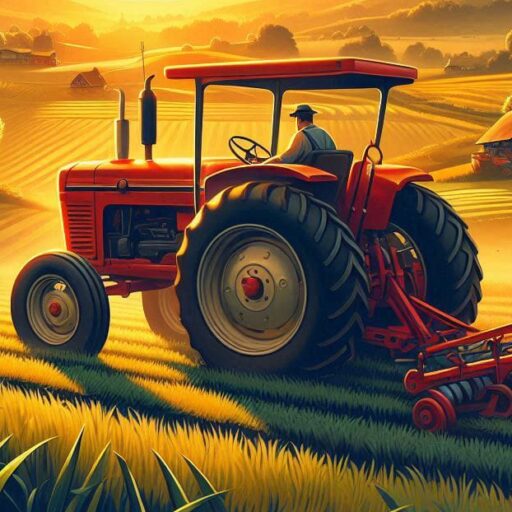UNIT – 3 AGRON 111 – Fundamentals of Agronomy 4(3+1)
Water resources, Role of Water in Plants, soil plant water relationship
Water resources – Water resources refer to the sources of water that are useful or potentially useful to humans. These resources are essential for drinking, agriculture, industry, recreation, and environmental sustainability.
A. Natural sources: –
- Precipitation – Rain, snow, hail and sleet are received on earth from the atmosphere
that constitutes the precipitation. - Atmospheric water other than precipitation – Atmospheric water constitutes of dew,
fog, cloud and atmospheric humidity which serves as a very minor source of water
for crop plants. - Ground water – The free water found beneath the ground surface is referred to as ground water.
- .Flood water – Occurrence of flood is a common phenomenon during the rainy period in many parts of India.
B. Irrigation water sources:
- Surface water – Rain and melting snow form streams, rivers and fill reservoirs, ponds and tanks. These form the sources of surface water. Surface water forms the largest source for irrigation purpose.
- Ground water – it is another important source of irrigation water. Seepage water from canals, reservoirs and lakes, influent drainage from rivers and percolating flood water recharge the ground water. Dug wells are constructed and shallow, medium and deep tube wells are constructed to pump out the ground water for irrigation purpose.
Role of Water in Plants
Constituent of Protoplasm
- Structural component of plant cells.
- Maintains cell form through turgor pressure.
- Essential for turgid cells and normal plant structure.
- Comprises 85-90% of young plants’ weight and 20-50% of mature plants’ weight.
Source of Essential Elements
- Provides oxygen and hydrogen for carbohydrate synthesis during photosynthesis.
Solvent and Medium
- Solvent for substances.
- Medium for metabolic reactions in plants.
Nutrient Uptake
- Solvent for plant nutrients.
- Assists in nutrient uptake from soil and through leaf sprays.
- Transports nutrients to various plant parts.
Food Distribution
- Carrier of food materials in soluble form from green parts to other plant parts.
Transpiration
- Vital for plant processes.
- Reduced transpiration affects growth and yield.
- Aids in nutrient absorption.
Hydraulic Process
- Facilitates conversion of starch to sugar.
Cell Turgidity
- Maintains turgidity of cell walls.
- Promotes cell enlargement and division, enhancing plant growth.
- Seed Germination and Growth
- Essential for seed germination, root growth, and soil organism nutrition and multiplication.
- Soil Reactions
- Crucial for chemical, physical, and biological reactions in soil.
- Temperature Regulation
- Dissipates heat through transpiration.
- Buffers against temperature extremes due to high heat of vaporization and specific heat.
The soil-water-plant relationship
The soil-water-plant relationship defines the dynamic interactions between soil, water, and plants, shaping the conditions for optimal plant growth. This intricate web of connections ensures the transfer of nutrients, water, and support vital for plant life.
Soil-Plant-Water Relationship
- Water Retention in Soil
- Soil acts as a reservoir, holding water in its pores.
- Water availability in soil depends on soil texture and structure.
- Soil Moisture Types
- Gravitational Water: Drains out of soil quickly after rainfall.
- Capillary Water: Held in soil pores, available for plant use.
- Hygroscopic Water: Tightly bound to soil particles, not available to plants.
- Water Uptake by Plants
- Roots absorb water from soil through osmosis.
- Root hairs increase surface area for water absorption.
- Transpiration
- Loss of water vapor from plant leaves.
- Creates a negative pressure, drawing water from roots to leaves.
- Essential for nutrient transport and cooling plants.
- Soil-Water Potential
- Measure of the energy status of water in soil.
- Affects water movement and availability to plants.
- Includes components like matric potential (water adhesion to soil particles) and osmotic potential (solutes in soil solution).
- Water Movement in Soil
- Infiltration: Water entering the soil surface.
- Percolation: Downward movement of water through soil layers.
- Capillary Action: Movement of water within soil pores against gravity.
- Soil Water Content Measurement
- Field Capacity: Maximum water soil can hold after drainage.
- Permanent Wilting Point: Soil moisture level at which plants cannot extract water.
- Available Water Capacity: Water available to plants between field capacity and permanent wilting point.
- Irrigation and Water Management
- Efficient irrigation ensures adequate water supply to crops.
- Techniques like drip irrigation minimize water loss and maximize usage.
- Soil moisture monitoring helps in scheduling irrigation.
- Nutrient Transport
- Water dissolves nutrients in soil, making them available for plant uptake.
- Water movement in soil helps distribute nutrients to root zones.
- Impact of Soil Properties
- Soil Texture: Influences water retention and drainage (e.g., sandy soil drains quickly, clay retains water).
- Soil Structure: Affects pore space and water movement.
- Organic Matter: Improves soil water-holding capacity and nutrient availability.
- Environmental Factors
- Rainfall and Precipitation: Primary source of soil moisture.
- Temperature: Affects evaporation rates and plant water needs.
- Humidity: Influences transpiration rates.
- Water Conservation Practices
- Mulching to reduce evaporation.
- Cover cropping to improve soil structure and moisture retention.
- Contour farming and terracing to minimize runoff and erosion.
UNIT –4 Irrigation – scheduling criteria and methods, quality of irrigation water, water logging.




Pingback: UNIT -2 Crop nutrition, manures and fertilizers, nutrient use efficiency, Classification of crops, Agroclimatic zones